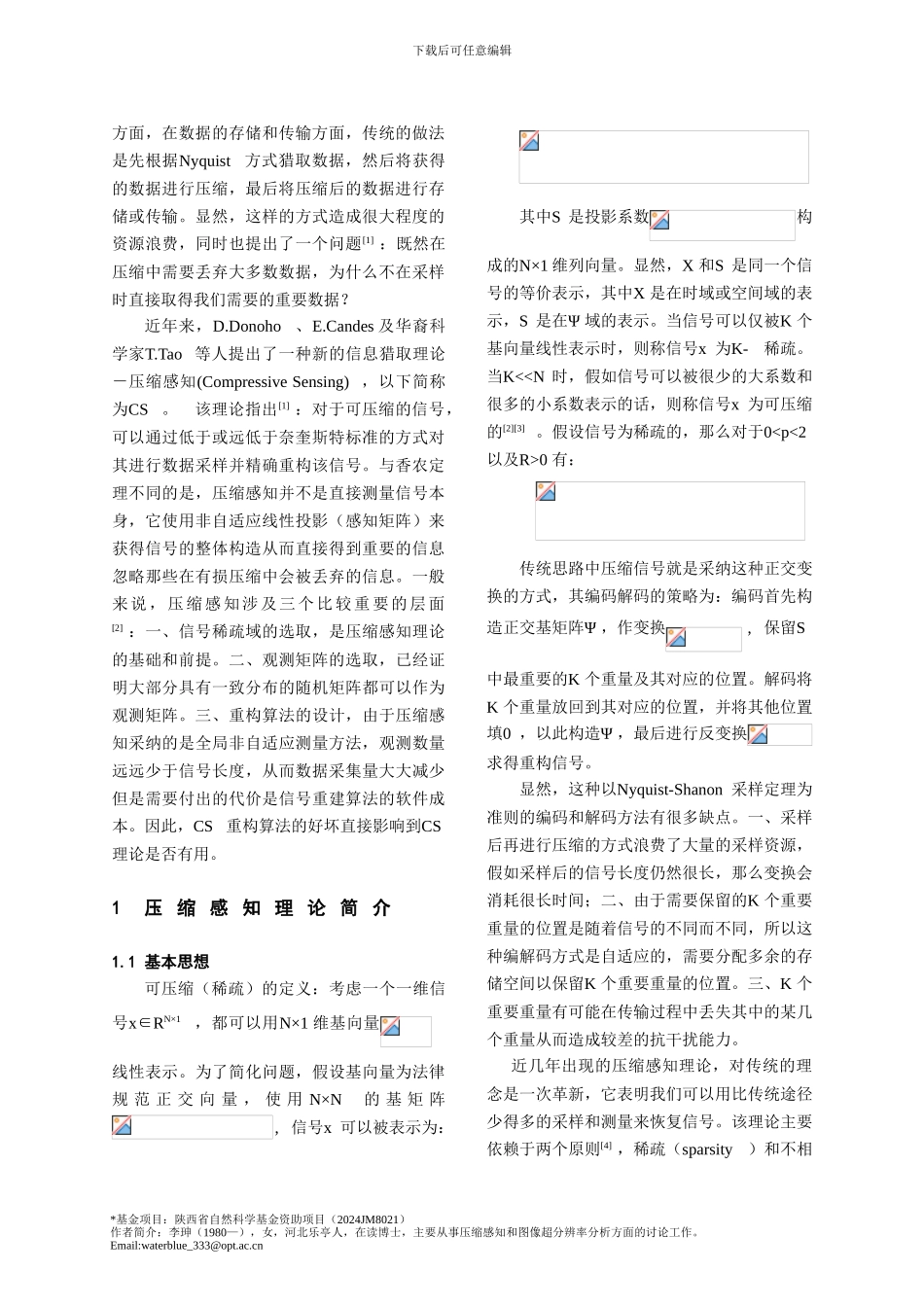下载后可任意编辑压 缩 感 知 重 构 算 法 综 述李珅1,2,马彩文1 ,李艳1 ,陈萍1(1.中国科学院西安光学精密机械讨论所 光电跟踪与测量室, 陕西省 西安市 710119; 2.中国科学院讨论生院, 北京 100039)摘要:现代社会信息量的激增带来了信号采样、传输和存储的巨大压力,而近年来出现的压缩感知理论(Compressed Sensing,CS) 为解决该问题提供了契机。该理论指出:对于稀疏或可压缩的信号,能够以远低于奈奎斯特频率对其进行采样,并通过设计重构算法来精确的恢复该信号。本文介绍了压缩感知理论的基本框架,综述了压缩感知理论的重构算法,其中着重介绍了最优化算法和贪欲算法并比较了各种算法之间的优劣,最后探讨了压缩感知理论重构算法未来的讨论重点。关键词:信号采样; 压缩感知; 稀疏; 重构算法中图法分类号: TP301.6 文献标识码:A Survey on reconstruction algorithm based on compressive sensingLi Shen1,2, Ma Cai-wen1, Li Yan1, Chen Ping1(1.Xi’an Institute of Optics and Precision Mechanics of CAS, Xi’an Shaanxi 710119, China; 2.Graduate University of Chinese Academy of Sciences, Beijing 100039, China )Abstract:With the rapid demanding for information, the existing systems are very difficult to meet the challenges of high speed sampling, large volume data transmission and storage. Recently, a new sampling theory called compressive sensing (CS) provides a golden opportunity for solving this problem. CS theory asserts that a signal or image, unknown but supposed to be sparse or compressible in some basis, can be subjected to fewer measurements than traditional methods use, and yet be accurately reconstructed. This paper gives a brief overview of the CS theory framework and reviews the reconstruction algorithm of CS theory. Next, this paper introduces the basis pursuit algorithm and greedy algorithms and explores the difference between them. In the end, we briefly discuss possible implication in the areas of CS data reconstruct...


